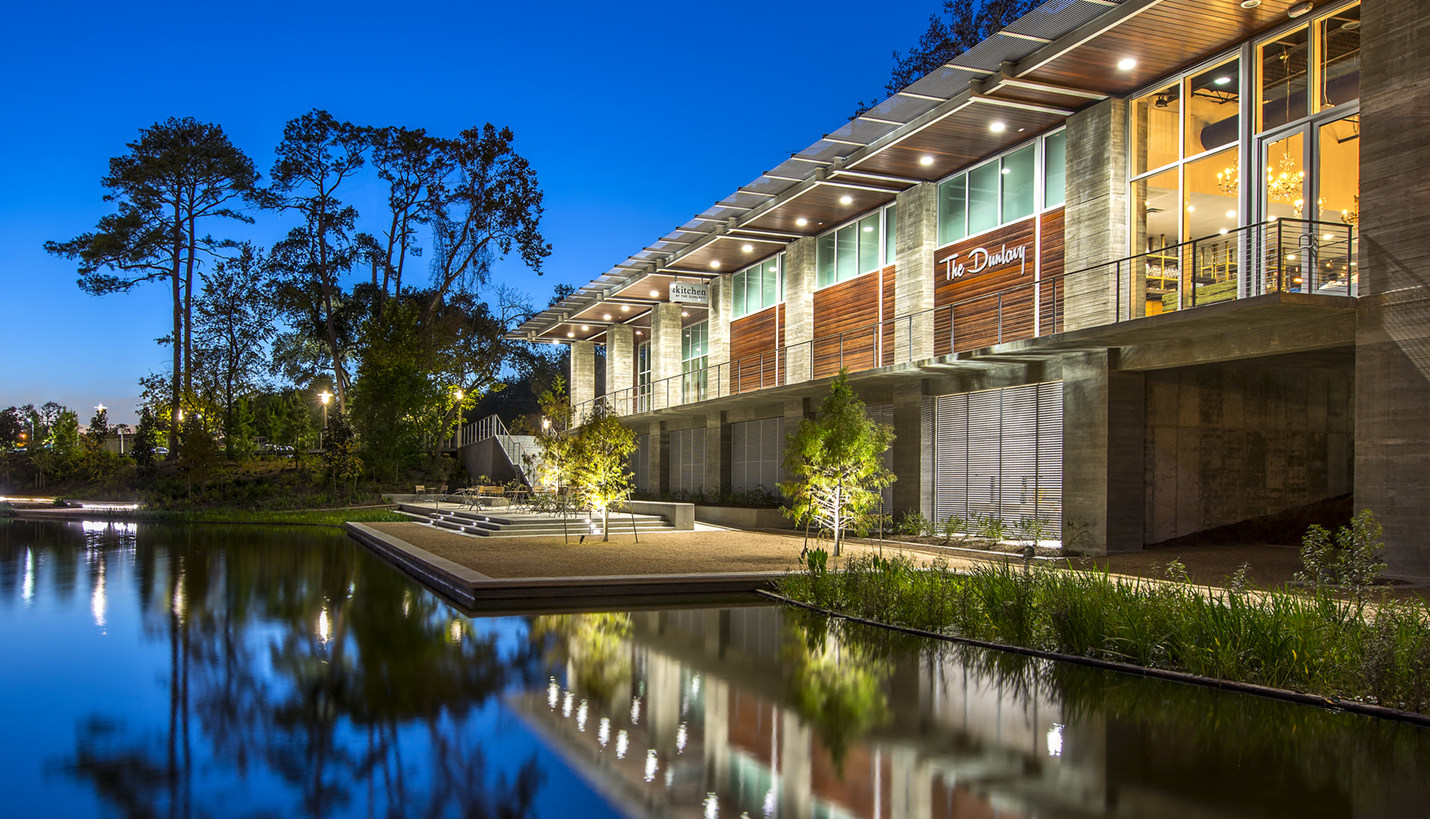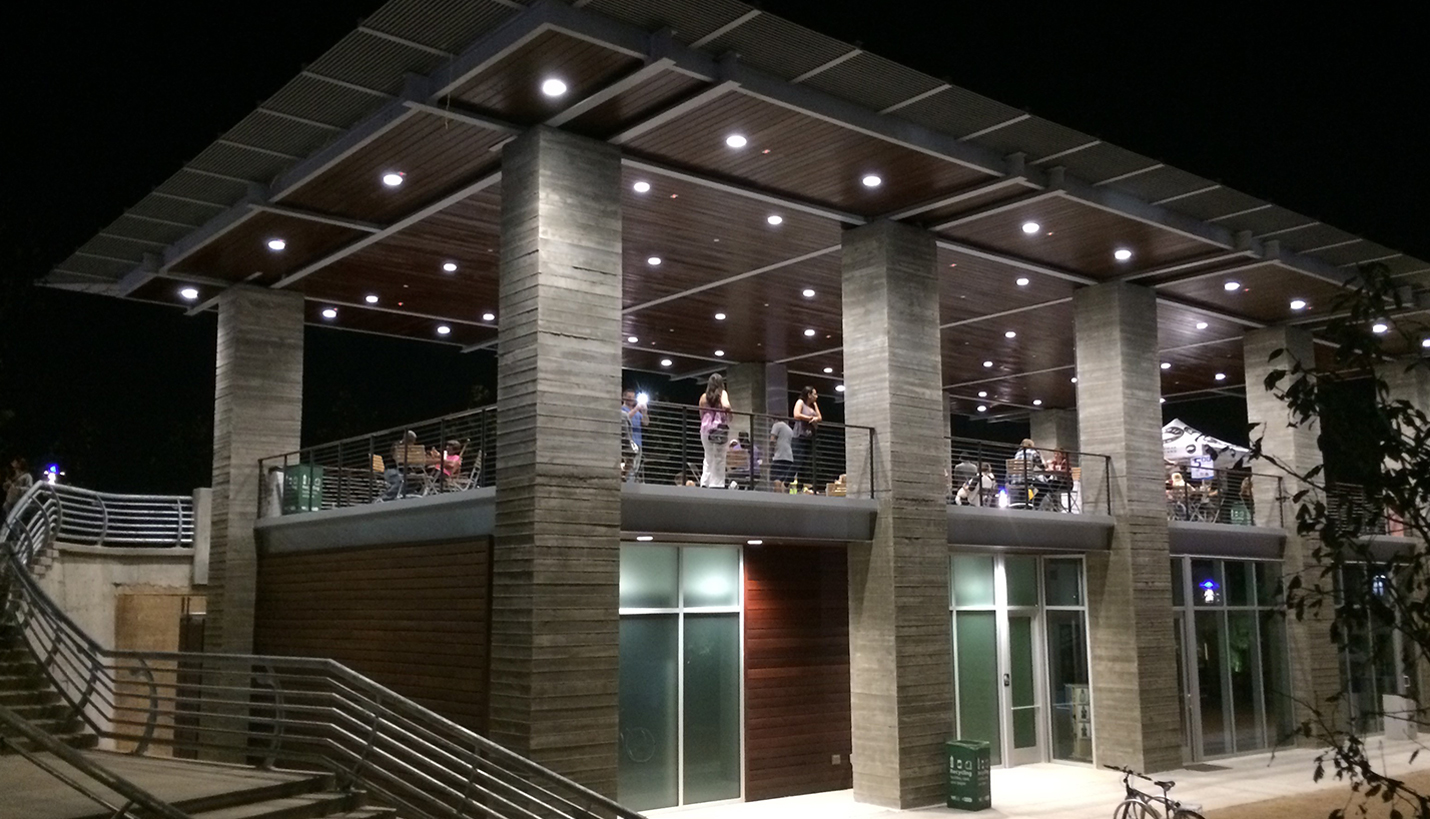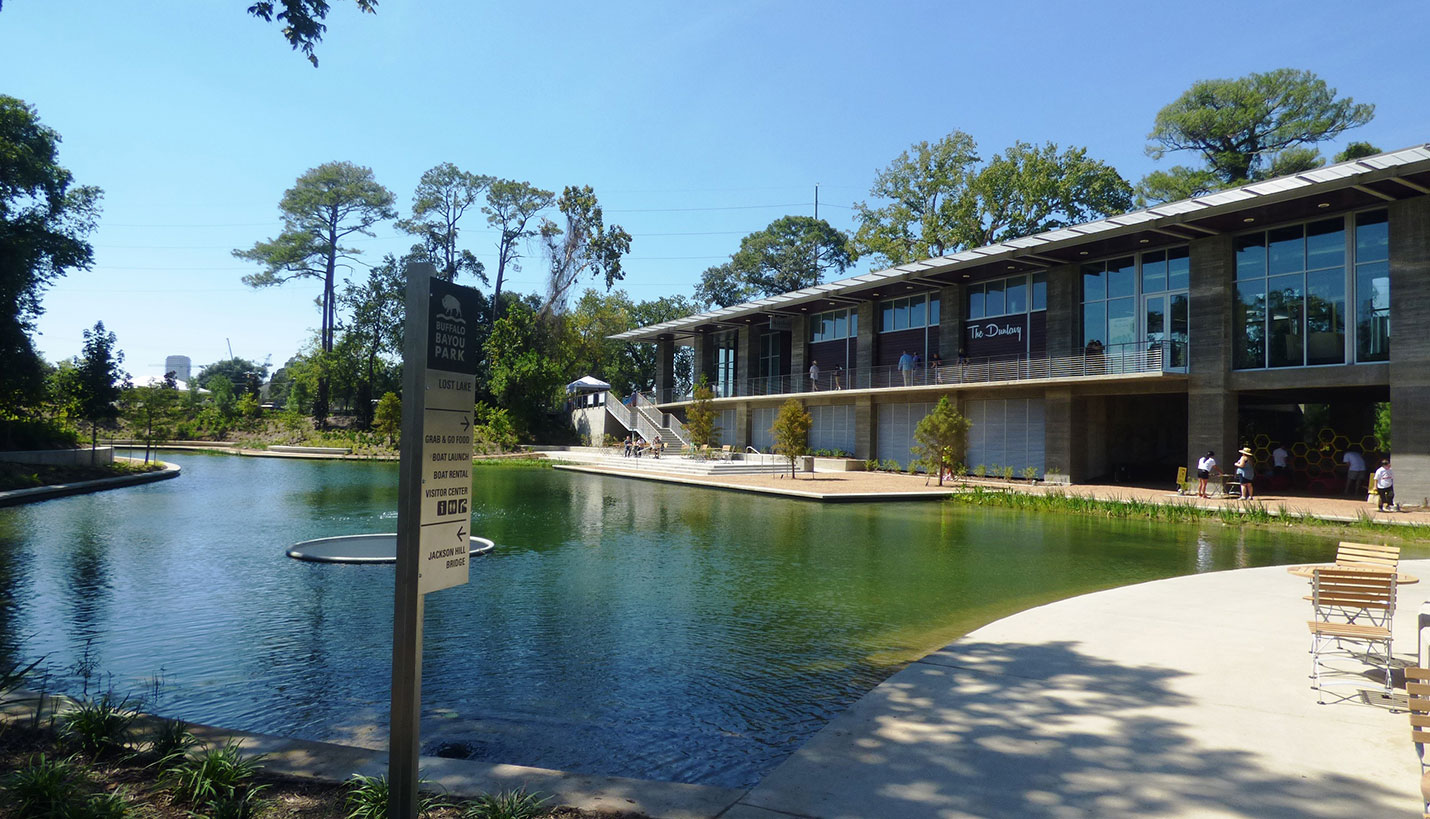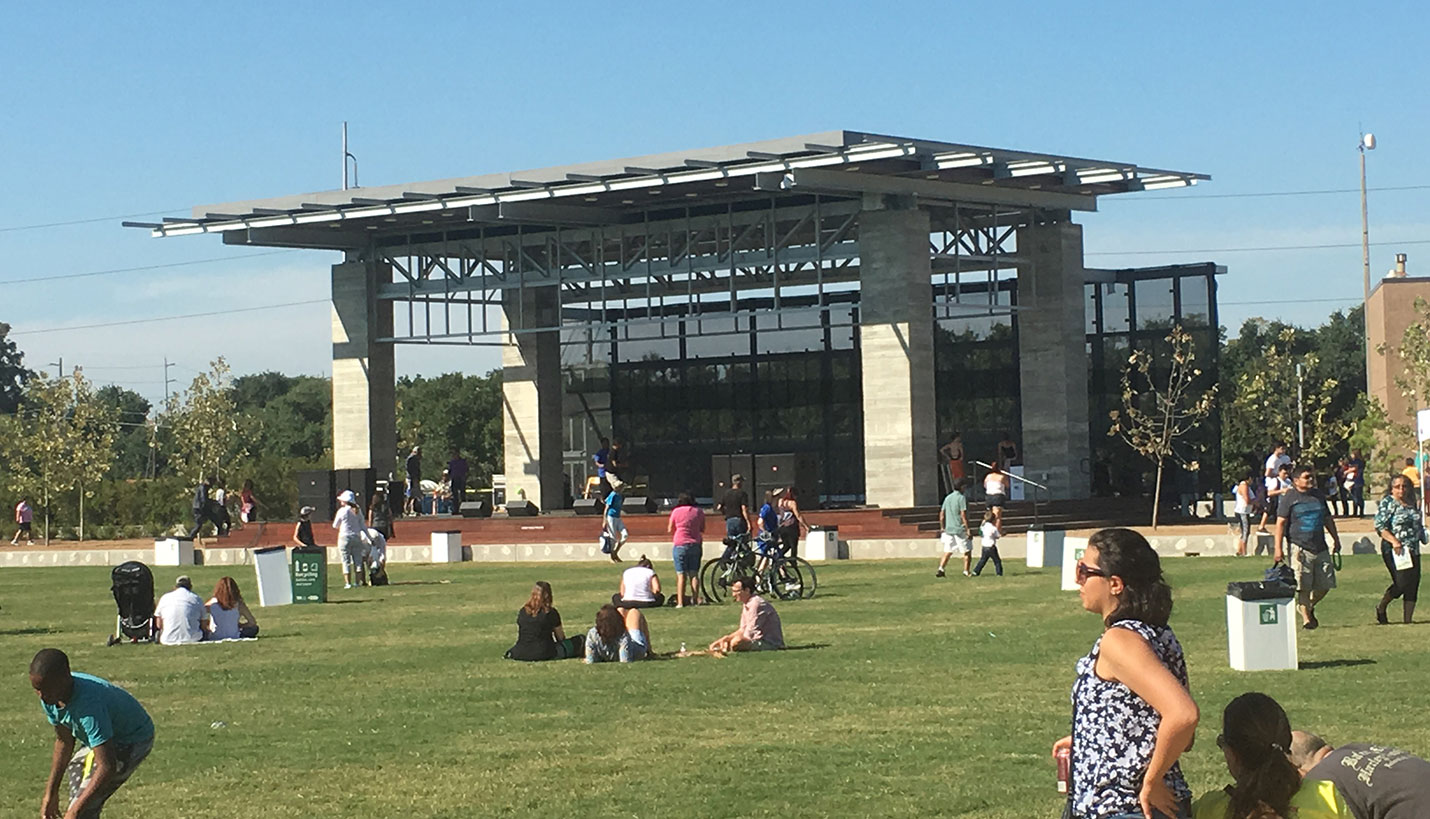Integrating Architecture into Buffalo Bayou Park
On October 3, 2015, Houstonians joined Buffalo Bayou Partnership to celebrate the opening of Buffalo Bayou Park, a 2.3-mile greenspace along either side of this historic waterway which has been transformed into a vibrant and iconic public space. As the architect for the primary structures in the 160-acre park which was master planned and designed by SWA, multidisciplinary design firm Page is honored to have been a member of the project team charged with revitalizing this section of the bayou just west of downtown Houston.
The $58 million project restores the natural landscape of this formerly polluted and expands access to more portions of the bayou. It also focuses on “passive” recreation and destination points, such as hike and bike trails, a dog park and event venues.
The architecture is sited in the park in places where there is intensification of activity. The buildings needed to be strong enough to be landmarks, open enough to be inviting, and shady enough to keep people comfortable. It was also important that the structures feel like a natural extension of the landscape design and that they be completely consistent with the larger framework of the park. These architectural elements were designed to create places of focus, while employing consistent materials to establish a unifying design vocabulary.
“All of the structures were designed with three critical “S’s” in mind: scale, strength and shade,” says Page Senior Principal and lead designer Larry Speck, FAIA. “We purposely used strong materials like concrete, yet the architectural vocabulary is warm and tactile.”
The design of each of the buildings begins with simple concrete piers that create rhythmic, well-proportioned bays and a durable structural and functional framework. The board-formed concrete in the structures reveals the grain in the wood, further tying the material to the surrounding environment. Galvanized steel spanning members, cantilevered on all sides, form a shady canopy over the piers. Natural wood soffits and louvered grills add warm color and soft light to contribute comfort and intimacy, and glass and wood infill panels contain conditioned space as required.
Sustainability plays a strong role in all elements of the park design, including the architecture. The concrete contains high fly-ash content, and recycled steel is used to reduce waste and resource consumption. Deep shade provided by the grills and high thermal mass established by the concrete help to moderate heat both in conditioned and non-conditioned park spaces.
The Lost Lake Building, which features a visitor center and a private event and dining space called The Dunlavy, occupies a high ridge above a re-established lake. It creates a long thin volume parallel to the lake in order to capture great vistas, nestle into mature trees, and lay amiably and naturally in its topography.
At the Water Works Building the same architectural vocabulary is employed to frame an important plaza that acts as a gateway to the park. A two-story volume creates an identifiable edge to the public space and a roof deck adds a dramatic overlook with views to the downtown skyline. The Water Works Pavilion extends that aesthetic to create a small covered stage for outdoor performances. Throughout the park shade structures, rest rooms and other public venues are all developed from this unifying design vocabulary.
Below the Water Works lawn is the recently re-discovered "Cistern," the City of Houston’s first underground drinking-water reservoir which had been unused for decades. It has been given a new accessible entrance, and a walkway winds around the interior perimeter of the 87,500-square-foot expanse, giving visitors a view of the rows of 25-foot tall concrete columns which stand in two inches of water on the reservoir’s floor. This space will be used for future art installations.
Page is proud to include its work on Buffalo Bayou Park in its growing portfolio of architecture for iconic public spaces, including Houston’s Discovery Green Park and Austin’s Umlauf Sculpture Garden. These park buildings will benefit their communities for a very long time to come and will truly make lives better.
10/06/2015













